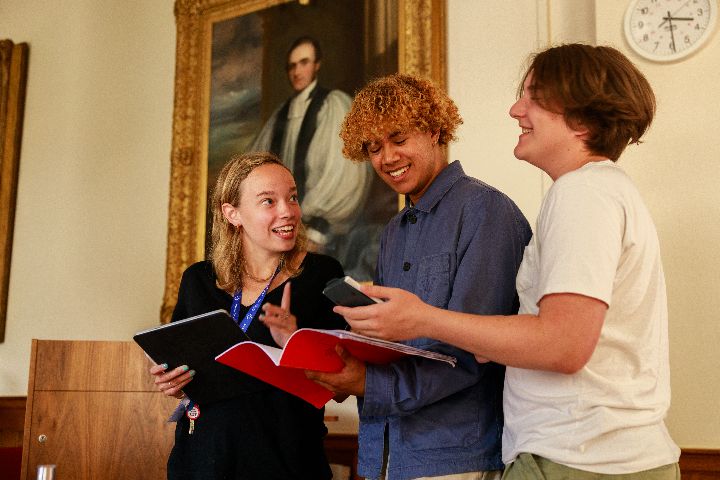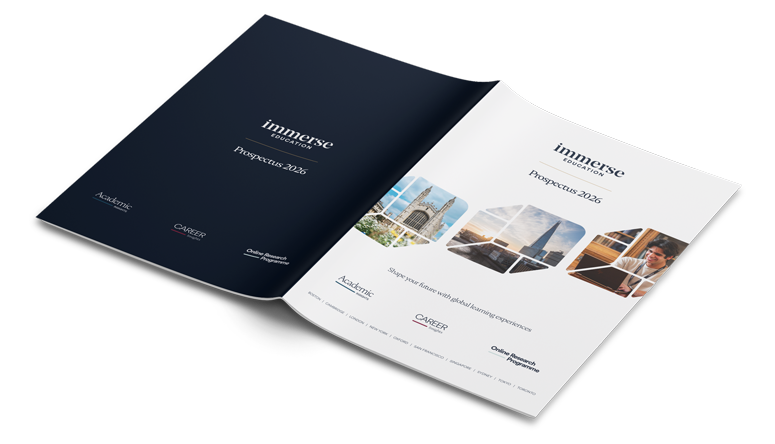Home › Essay Competition › Essay Competition Winners › 2024 Winning Essay – Lucía M.
2024 Winning Essay – Lucía M.

Table of Contents
100% Scholarship Winner, Lucía Moya, judged by Susmita Bhattachayra
What Influences An Architect’s Vision?
The architect’s vision is an amalgamation of diverse influences that shape and define the built environment. From historical echoes to the pulse of contemporary society, the architect navigates a complex tapestry of inspiration. However, if there is one concept that has remained throughout architectural history, it is the search to simplify human lives. Architecture is nothing without humanity, and humanity is nothing without architecture. The main inspirational sources for an architect’s vision rely on history, culture, environment, technology, and the harmony of urban dynamics.
The extraordinary inspiration of architects comes from the way our ancestors used to plan their homes, streets, and cities. Monuments like the Forbidden City, the Pantheon in Rome, and Gothic Cathedrals are proof of human innovative capabilities and architectural skills. Architects are inspired by ancient landmarks; they have embedded these principles to master design, creativity, and proportion. Culture, as well, influences the way an architect thinks and creates his design because it is the builder’s customs and norms that define his creativity. Indian temple’s bright and vibrant colours, the Japanese designs which are known for keeping things simple, and European architecture all have a significant effect on how we think. The book “Delirious New York” by Rem Koolhaas explains the impact of architecture on urban society. Cultural involvement is the best source that enables architects to connect their designs with some meaning and a specific identity.
Advanced technology is forcing engineers to move to unknown areas in this century. The modern architect’s toolkit includes 3D printing and sustainable materials, and they reshape the older ways of designing. Nicholas Negroponte’s “Being Digital” tells architects how to use digital tools to transform their creativity, guiding them on why digital tools are important in the future.
Architects are trying to incorporate sustainability and environmental consciousness into their work as a result of increased environmental issues. Visionaries like Ken Yeang, as presented in “Eco-Design Handbook: For a More Productive Environment”, emphasize a well-balanced link with nature within the home and office space. Architects not only focus on the design but also look forward to designing in a way that is environmentally friendly and not harmful to the ecosystem. An architect does not only design buildings, rather, he choreographs urban experiences too. There is a great influence of urban dynamics on how architectural projects are envisioned, which are shaped mainly by shifts in demographics, financial forces, and shared social dreams. Jane Jacobs, in her popular book “The Death and Life of Great American Cities”, provides valuable insight that can help urban planners and architects craft communities that improve the city’s quality of life.
Architects are trying to incorporate sustainability and environmental consciousness into their work as a result of increased environmental issues. Visionaries like Ken Yeang, as presented in “Eco-Design Handbook: For a More Productive Environment”, emphasize a well-balanced link with nature within the home and office space. Architects not only focus on the design but also look forward to designing in a way that is environmentally friendly and not harmful to the ecosystem. An architect does not only design buildings, rather, he choreographs urban experiences too. There is a great influence of urban dynamics on how architectural projects are envisioned, which are shaped mainly by shifts in demographics, financial forces, and shared social dreams. Jane Jacobs, in her popular book “The Death and Life of Great American Cities”, provides valuable insight that can help urban planners and architects craft communities that improve the city’s quality of life.
An architect’s vision emerges as a dynamic synthesis of historical resonance, cultural diversity, technological advancements, environmental consciousness, and urban dynamics. Each influence contributes to a rich and nuanced perspective, guiding architects as they navigate the complexities of design. The architect, therefore, becomes a curator of influences, weaving together a narrative that transcends time and space, creating structures that resonate with the human experience.
Why Apply To The Immerse Education Essay Competition?
Are you a highly motivated student aged 13-18? Have you ever wanted to experience studying in Cambridge or Oxford?
The Immerse Education essay competition allows you the chance to submit an essay for the chance to be awarded a scholarship to the award-winning summer schools at the University of Cambridge, Oxford, Sydney and more.
How To Apply To The Immerse Education Essay Competition?
The Immerse Education annual essay competition is a once-in-a-lifetime opportunity to win a scholarship to a Cambridge or Oxford summer school.
If you’re aged 13-18 and you’re interested in applying to the Immerse Education essay competition, then please visit our essay competition page for more details.
Subscribe to the Immerse Education newsletter for £100 off your programme*
We will send you updates and the latest news about our company. Sign up for free by filling out the form.





